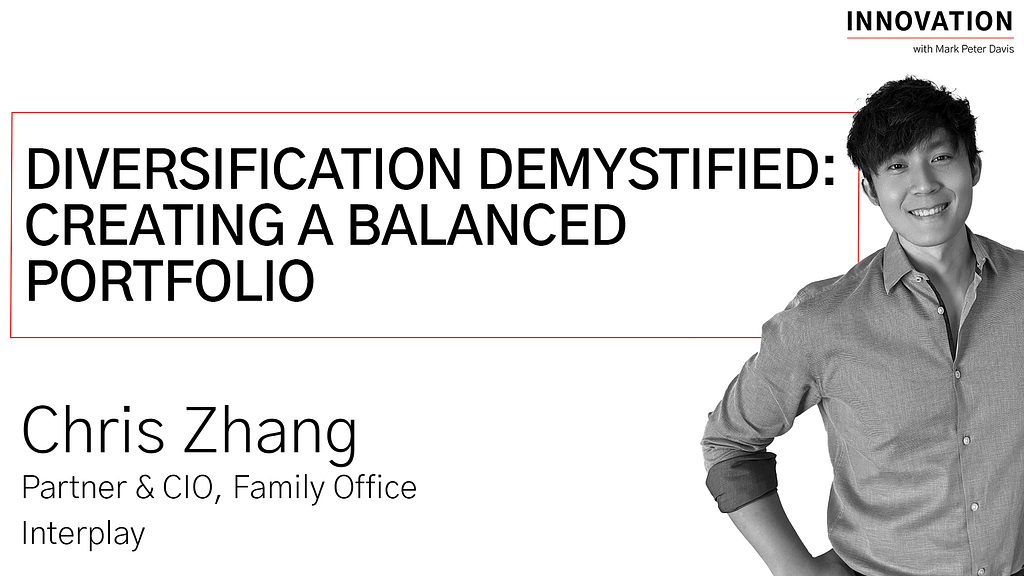Understanding the Endowment Model: Diversification and Risk Management
Welcome to our comprehensive guide on the endowment model and its significance in managing diversified portfolios, inspired by a deep dive into the topic with Chris Zhang, CIO and partner at Ascend Interplay. This article aims to elucidate the concepts discussed in our recent podcast episode and explore how diversification and risk management play pivotal roles in asset management for ultra-high-net-worth families.
What Is the Endowment Model?
The endowment model, popularized by David Swensen of Yale, is an investment strategy focusing on a diversified portfolio that leans heavily towards alternative assets such as private equity, venture capital, and real estate. Unlike traditional portfolios that predominantly comprise public equities and fixed income, the endowment model seeks to enhance returns by incorporating less liquid but potentially higher-yielding investments.
Why Do Endowments Use This Model?
Endowments, like those of major universities, have well-defined, long-term liabilities. This allows them to invest patiently, capturing the illiquidity premium associated with private assets. The model’s core principle is constructing a portfolio of uncorrelated assets to maximize returns and minimize risk, ensuring stability through varying market conditions.
How Does Diversification Work in the Endowment Model?
Diversification in the endowment model goes beyond the traditional mix of stocks and bonds. It involves spreading investments across various asset classes, geographies, and stages of investment. This approach aims to capture uncorrelated returns, which can reduce overall portfolio risk.
What Are Uncorrelated Assets?
Uncorrelated assets move independently of each other. In theory, combining them should reduce portfolio volatility and risk. However, true uncorrelated assets are rare, especially in today’s interconnected global market. Even assets previously thought to be uncorrelated, like public equities and fixed income, can show positive correlation during market downturns due to macroeconomic factors and central bank policies.
Is Volatility a Relevant Measure of Risk?
Traditional measures of risk, such as volatility, often fall short in evaluating the endowment model’s effectiveness. Volatility captures both upside and downside movements, which doesn’t fully reflect an investor’s risk exposure, especially for long-term, illiquid investments.
What Are Better Measures of Risk?
- Drawdown Risk: This measures the potential loss from peak to trough in a portfolio.Liquidity Risk: The risk that assets cannot be sold quickly without a significant price concession.Manager Selection Risk: The risk associated with the skill and performance of the fund managers.
How Many Uncorrelated Assets Are Needed for Diversification?
Ray Dalio’s research suggests that a small number of truly uncorrelated assets can provide substantial risk reduction. However, in the real world, where assets are often correlated, achieving proper diversification might require a broader portfolio.
How Many Investments Are Ideal?
For private portfolios, having around 50 investments across different funds and direct investments is a practical approach. This ensures diversification across various asset classes, geographies, and managers, reducing idiosyncratic risk while avoiding the creation of an index-like portfolio with minimal alpha.
The Importance of Manager Selection
A critical aspect of the endowment model is the ability to select top-performing managers. Swensen highlighted that the success of this model depends significantly on capturing top quartile returns, which requires access to and selection of the best investment opportunities.
How to Ensure Good Manager Selection?
- Proprietary Pipeline: Develop a robust pipeline to source top-tier opportunities.Thorough Due Diligence: Conduct comprehensive due diligence on fund managers and their strategies.Ongoing Monitoring: Continuously monitor and reassess investments to ensure they meet performance expectations.
FAQs
What is the endowment model?
The endowment model is an investment strategy that focuses on a diversified portfolio of alternative assets, such as private equity, venture capital, and real estate, to achieve higher long-term returns.
Why is diversification important in the endowment model?
Diversification reduces overall portfolio risk by combining uncorrelated assets, which can perform independently under various market conditions, providing stability and enhancing returns.
Is volatility a good measure of risk for the endowment model?
No, volatility captures both upside and downside movements and doesn’t fully reflect an investor’s risk exposure, especially for long-term, illiquid investments.
How many uncorrelated assets are needed for effective diversification?
In a correlated market, a broader portfolio is necessary. For private portfolios, having around 50 investments ensures sufficient diversification across different asset classes, geographies, and managers.
How important is manager selection in the endowment model?
Manager selection is crucial. Capturing top quartile returns significantly impacts the portfolio’s success, necessitating a robust process for sourcing, selecting, and monitoring top-performing managers.
For those interested in exploring more about finance and investment strategies, we invite you to listen to more podcasts on our website. If you’re looking for an incubator to support your entrepreneurial journey, learn more about our incubator program.
Stay informed, stay invested, and join us in advancing society through innovative financial strategies.

Diversification Demystified: Creating a Balanced Portfolio was originally published in @MPD on Medium, where people are continuing the conversation by highlighting and responding to this story.

